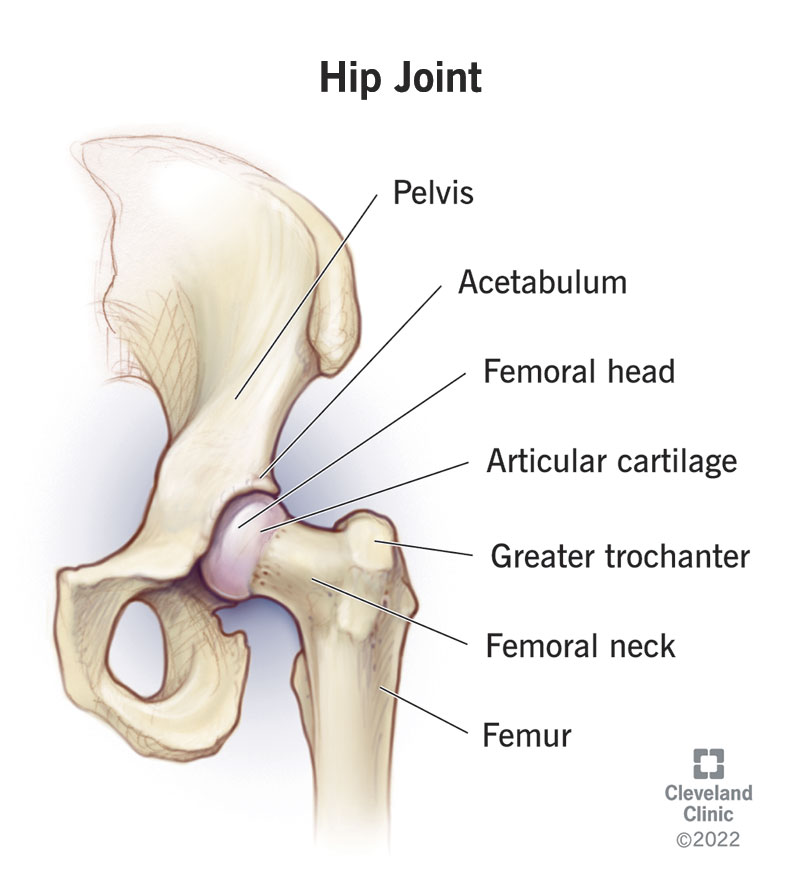Your hip joints are connection points between your legs and your torso. Specifically, they’re made up of your thigh bone (femur) and your hip bone (pelvis). Hips are ball-and-socket joints that support your body weight and allow you to move your upper legs.
Advertisement
Cleveland Clinic is a non-profit academic medical center. Advertising on our site helps support our mission. We do not endorse non-Cleveland Clinic products or services. Policy

The hip joint is where your thigh bone connects to your pelvis. It’s the second biggest joint in your body after your knees.
Advertisement
Cleveland Clinic is a non-profit academic medical center. Advertising on our site helps support our mission. We do not endorse non-Cleveland Clinic products or services. Policy
Your hips are ball-and-socket joints. A rounded ball at the top of your thigh bone fits into a socket in your pelvis. They get their medical name from this connection. This socket is the acetabulum. And your thigh bone is your femur. So, the medical term for the hip joint is the acetabulofemoral joint.
The hip joint has several important functions, including:
Your hips can move in lots of directions. You use them for almost any motion that uses your legs or torso. They can:
Your hips are where your upper legs meet your torso. You have one hip joint at the top of each thigh. They’re just below your waist.
Your hips are made of:
Advertisement
Some hip conditions include:
Your hips are usually very strong and stable. But hip injuries can happen. That’s because you use them for so many motions and activities. Some hip injuries can include:
Some of the most common hip symptoms include:
Everyone has the occasional ache or pain. And you might be stiff after vegging out on the couch for an afternoon. But don’t ignore symptoms that last more than a week or two. Visit a healthcare provider if you’re experiencing pain or any other symptom that makes it hard to move or use your hips.
You use your hips almost constantly. Even when you’re not thinking about it. They’re one of the biggest, most important joints in your body. Your hips are strong enough to support you throughout your life. But injuries and health conditions can affect them. It’s common to have occasional hip pain or stiffness. But you shouldn’t have to live in discomfort.
Visit a healthcare provider if it feels like your hips aren’t as strong or stable as usual. They’ll help you figure out what’s causing the symptoms and how you can feel your best again.
Advertisement
Cleveland Clinic’s primary care providers offer lifelong medical care. From sinus infections and high blood pressure to preventive screening, we’re here for you.

Last reviewed on 06/19/2025.
Learn more about the Health Library and our editorial process.